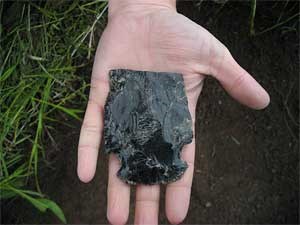Last updated: May 9, 2023
Article
What Is Archeological Context?

Ask any archeologist, “What is the most important aspect of an archeological resource?” and they will undoubtably reply, “Its context!” Context, also called provenience, is the most important aspect of an artifact, feature, or site.
"Context" is typically thought of as the place where an artifact is found. But archeologists actually consider multiple contexts:
- Chronological context places resources in time and in a sequence before some events and after others.
- Historical context, known by traditional knowledge and documentary records, provides information about events at the time.
- Cultural context places resources in terms of the attitudes, beliefs and behaviors of people.
- Social context involves the ways people within cultures interact with each other.
- Geographic context establishes locations in space on a landscape.
- Archeological context sets resources within these contexts and in association with other artifacts, ecofacts and sites.
Context imbues archeological resources with significance and meaning. Without context, the meaning and significance of an archeological resource is lost. During archeological studies, archeologists pay especial care to document the context of resources.
